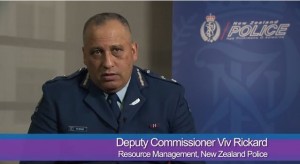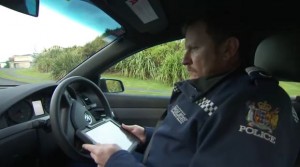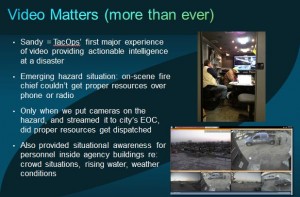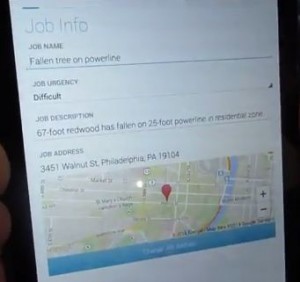Safety is a prerequisite for a healthy city economy. Businesses and families move to safer cities. Tourists think about it when deciding where to go for vacation. Events organizers heavily weigh safety when selecting venues.
Increasing safety used to mean finding budget for additional personnel, vehicles, equipment, radio networks, and other traditional IT. But now mayors and police chiefs have another Smart Cities safety tool that works well—and costs less. Daniel Stewart, Senior Justice Advisor, and Chief Bob Stanberry, Cisco business development manager for Cisco Connected Justice and Public Safety recently discussed some of the safety and security challenges and trends in public safety in a webcast called “Unlock the Power of Technology to Make Communities Safer“. So how do we scale the same amount of funding and resource, achieve effective and secure collaboration and information sharing, and leverage new technologies – Bring your own device, BYOD,Internet of Things, IoT, as part of a scalable architecture?
It’s called the “Internet of Everything.” The basic idea is to connect people, process, data, and things (like sensors) in new ways. Here are three examples.
New Zealand Police Officers Spend More Time in Community
About 6000 New Zealand Police officers now have about 30 extra minutes each day to spend in the community.

The solution is deceptively simple. The officers were given iPhones and iPads so that they can communicate more directly, intuitively and gain access to information more easily. They don’t have to drive to the station to access law-enforcement databases and submit forms. Instead, they just use a mobile app. They receive assignments from the dispatcher using the mobile app called Mobile Responder. To request assistance, they just click, and the dispatcher receives the exact location.
The only cost was for the mobile devices, approximately NZ$159

million. What’s striking here is that the department didn’t need come up with the funds to build a wireless network. Instead, Vodafone agreed to give priority to New Zealand Police wireless traffic over Vodafone’s existing, public 4G/LTE network. That’s possible thanks to the 3rd-Generation Partnership Project (3GPP) multimedia priority service.
Giving priority to public safety agencies on public cellular networks is a major breakthrough. During emergencies, traffic spikes over cellular networks can impair quality or cause outages. Police and fire departments need priority over public networks. And with multimedia priority service, they can have it.
In a 2013 pilot with 100 officers, the mobile apps saved an average of 30 minutes each day. Multiplied by 6086 officers, the time savings amount to 325 full-time officers. The time goes toward frontline crime reduction.
Hurricane Sandy Responders Used Video for Situational Awareness
During Hurricane Sandy, traffic lights at a major intersection in Queens, New York, lost power. The resulting gridlock had become dangerous to residents trying to evacuate. A fire department chief put in an urgent request for police officers to direct traffic, but the request was buried among hundreds of others.

The fire chief was able to convey the urgency of the request using video cameras, part of the Internet of Everything. Nearby was a Cisco NERV (Network Emergency Response Vehicle). The chief aimed one of its Cisco video surveillance IP cameras at the intersection. Then he invited New York Police Department and Emergency Operations Center personnel to a WebEx session with audio and video. Seeing the gravity of the problem firsthand, commanders agreed to escalate the request. Just 15 minutes later, police officers arrived to direct traffic. The evacuation proceeded in an orderly way.
Accelerate Threat Awareness and Response
Problems like a flooded sewer system or downed power line hurt the local economy. Businesses have to close their doors, and people tend to stay home instead of shopping or downing.
Now utilities are finding out about safety problems sooner, using their existing network. A sensor in the sewer system, for example, can report a problem before residents do. And the dispatcher can find the closest person—from any agency—with the expertise to fix the problem.

One of our partners, Technuf, has built a solution called Aphelia. It’s a mobile app that ties into Cisco IP Interoperability and Collaboration Solution (IPICS) and our Instant Connect push-to-talk (PTT) solution. The dispatcher receives alerts on a tablet, such as “70-foot redwood tree has fallen on 25-foot power line in residential zone.” The dispatcher taps a button to see nearby field workers with the required expertise. Another tap assigns them the task.
Field workers receive the assignment, including a map, on a smartphone or tablet. To collaborate with other experts, they just tap to start a video call. Another tap starts a PTT radio session from the smartphone.
Safer Cities, At Lower Cost
These are just a few examples of creative ways to use the Internet of Everything for safer cities. The payoff is a better quality of life, and an invigorated economy.
To learn more please visit:
- Cisco Connected Safety and Security
- Smart+Connected Communities
- Intergraph Public Safety – Mobile Responder
- Hurricane Sandy Lessons Learned
- Public Safety Webinar – Unlock the Power of Technology to Make Communities Safer
Register for the blog series / follow us online:
- You can register to receive the entire #SmartConnectedCity blog series.
- Throughout the series, you can also follow the hashtags #SmartConnectedCity, #NCS2014, and #CiscoIoE on Twitter for updates.
# # #


CONNECT WITH US